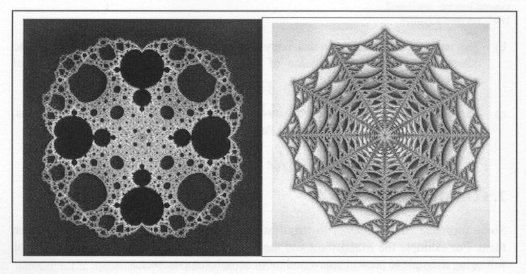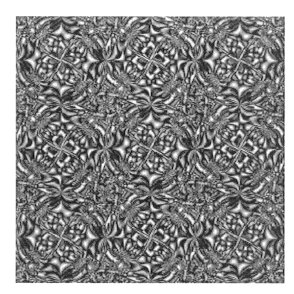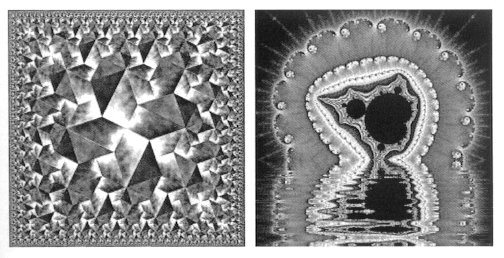|
ITERATION INTO THE COMPLEX PLANE:
JAVIER BARRALLO & SANTIAGO SÁNCHEZ
Name: Barrallo J. Computer Science PhD. (1992), (b. Bilbao, Spain, 1964) Address: E.T.S. Arquitectura. Plaza Onati, 2. 20018 San Sebastian. Spain. E-mail: mapbacaj@sa.ehu.es Fields of interest: Dynamical Systems, Mathematical Education, Structural Analysis of Heritage Buildings. Awards: Hobby Press Award, 1992. Publications and/orExhibitions: Fractal Geometry (book –
1992), The Frontier between Art & Science (Exhibition 1997 -
2001), Mathematics & Design Conference (1998), ISAMA Conference
(1999), The Basque Country Gothic Churches (2000)
Abstract:
Three techniques to generate more intricate fractal symmetry patterns are
described in this paper. The first one is based on the development of new
fractal formulae, the second is based on mappings of classic formulae according
to the 17 crystallographic groups and the third one is the use of kaleidoscopes
and tessellations.
1. INTRODUCTION Sets obtained under iteration into the complex plane usually show simple symmetric patterns. These sets often have fractal structure, especially when using quadratic functions. The basic symmetries shown by some elementary functions like the Mandelbrot, Julia, Koch or Sierpinski sets can be modified in order to show more intricate symmetries and visual effects. We will discuss three different techniques: a) The creation of new families of formulae that exhibit more sophisticated symmetries. For example a quadratic equation with simple X or Y-axis symmetry can be transformed into a new one showing more symmetric properties. b) The use of plane mappings that copy a certain region of the complex plane into others, according to the scheme of any of the 17 crystallographic groups of symmetry.
c) The design of transformations that produce kaleidoscopes, self-similarity
patterns, Truchet tessellations, L-Systems and Penrose and Escher like
tiling.
2. FORMULA CREATION Some formulae can be altered to
manifest symmetries that usually are not present on them. For example the
Mandelbrot and the Sierpinski sets can be transformed as in the following
example to present a new and more complex appearance.
FOUR MANDELBROTS init:
SIERPINSKI NET init:
3. PLANE MAPPINGS Any region of the plane can be mapped into another regions with the same or different shape producing symmetric patterns. The 17 crystallographic groups of symmetry can be used as a basic catalogue to generate these transformations. The structures obtained iterating
the complex variable values into a dynamical system are mapped all along
the plane creating an amazing family of graphics with several applications
to Art and Design.
4. TRANSFORMATIONS After a formula is introduced into a dynamical system, iterated enough times and mapped along the complex plane, the resulting values can be modified by external transformations, not related with the formulae. These transformations can be designed to produce kaleidoscopes, self-similar patterns, L-Systems, Truchet tessellations and Penrose and Escher like tiling. Other transformations can be designed
to create symmetry effects. For example the following code recreates the
reflection of an object over the water surface.
LAKE TRANSFORMATION y =
imag(pixel)
All these techniques will be widely shown with several new images that have been specially created for the ISIS conference.
All images created
by Javier Barrallo 2001
|


